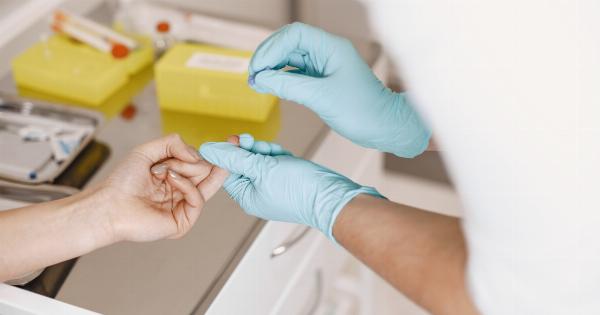Diabetes is a chronic disease that affects millions of people worldwide.
It is characterized by a high level of sugar in the blood, either because the body does not produce enough insulin or because the cells do not respond to the insulin that is produced. While genetics and other factors play a role in the development of diabetes, it is becoming increasingly clear that diet also plays a significant role.
In particular, the choices we make for lunch can have a profound impact on our risk of developing diabetes.
The dangers of a high-sugar lunch
One of the main culprits in diabetes risk is the consumption of foods and beverages high in sugar. These include sugary sodas, fruit juices, desserts, and sweetened snacks.
When we consume these products, our blood sugar levels spike, putting pressure on the body’s insulin response. Over time, this constant strain on the insulin-producing cells can lead to insulin resistance and, eventually, type 2 diabetes.
The importance of carbohydrates in the balance
Carbohydrates are an essential part of any diet, providing much-needed energy for our bodies. However, not all carbohydrates are created equal.
Simple carbohydrates, found in processed foods and refined grains, are quickly broken down into sugars and can cause a rapid increase in blood sugar levels. On the other hand, complex carbohydrates, found in whole grains, legumes, and vegetables, are broken down more slowly, leading to a more gradual increase in blood sugar.
Choosing complex carbohydrates for lunch can help maintain stable blood sugar levels and reduce the risk of diabetes.
The role of fiber in diabetes prevention
Dietary fiber plays a crucial role in diabetes prevention. Foods rich in fiber, such as whole grains, fruits, and vegetables, help slow down the absorption of sugar into the bloodstream, preventing blood sugar spikes.
Additionally, fiber promotes satiety, helping us feel fuller for longer and reducing the likelihood of overeating. Incorporating fiber-rich foods into our lunch choices can help regulate blood sugar levels and lower the risk of developing diabetes.
The importance of portion control
In addition to the types of food we choose for lunch, portion control is another key factor in diabetes risk. Overeating, especially high-calorie meals, can lead to weight gain and increased insulin resistance.
By practicing portion control and paying attention to our hunger and fullness cues, we can better manage our calorie intake and reduce the risk of diabetes.
The benefits of a balanced lunch
A balanced lunch is one that combines lean proteins, complex carbohydrates, healthy fats, and fiber-rich foods.
By including a variety of nutrients in our lunch meals, we help regulate blood sugar levels, promote satiety, and provide our bodies with the necessary fuel to function optimally. Some examples of a balanced lunch include a salad with grilled chicken, quinoa, and avocado or a whole-wheat wrap with turkey, vegetables, and hummus.
The role of unhealthy fats in diabetes risk
Not all fats are created equal, and certain types of fats can have detrimental effects on our health. Saturated and trans fats, found in fried foods, processed snacks, and fatty cuts of meat, are known to increase the risk of developing type 2 diabetes.
These fats can lead to inflammation, insulin resistance, and weight gain. Opting for healthier fats, such as those found in nuts, seeds, avocados, and oily fish, can help lower diabetes risk.
The impact of lunchtime habits on diabetes risk
Aside from the food choices themselves, our lunchtime habits can also impact diabetes risk. Skipping lunch or regularly eating lunch on the go can lead to poor food choices and overeating later in the day.
By taking the time to sit down and enjoy a balanced lunch, we can make more mindful choices and avoid the temptation of unhealthy options. Establishing healthy lunchtime habits can contribute to long-term diabetes prevention.
The role of meal planning in diabetes prevention
Meal planning can be a helpful tool in managing diabetes risk. By planning our lunches in advance, we can ensure we have access to nutritious options and avoid relying on convenient, but unhealthy, choices.
Taking the time to prepare our lunches at home allows us to control the ingredients, portion sizes, and cooking methods, all of which can contribute to a healthier lunch and a reduced risk of diabetes.
The importance of education and awareness
Education and awareness are crucial for understanding the impact of lunch choices on diabetes risk.
By learning about the effects of different foods on blood sugar levels and overall health, individuals can make informed decisions regarding their lunchtime meals. Increased awareness surrounding the importance of balanced nutrition and the prevention of diabetes can help individuals make positive changes to their lunch choices and overall lifestyle.
Seeking professional guidance
If you are concerned about your diabetes risk or have been diagnosed with prediabetes, seeking guidance from a healthcare professional, such as a registered dietitian, can be beneficial.
They can provide personalized recommendations based on your specific needs and help you make the necessary changes to your lunch choices to reduce your risk of diabetes.
Conclusion
While genetics and other factors contribute to the development of diabetes, our lunch choices play a significant role in determining our risk.
Opting for balanced meals that include complex carbohydrates, fiber-rich foods, and healthy fats can help regulate blood sugar levels and reduce the risk of developing diabetes. It is important to practice portion control, avoid high-sugar foods and beverages, and establish healthy lunchtime habits.
By making informed choices and seeking professional guidance when needed, we can take control of our lunch choices and reduce our risk of diabetes.

























